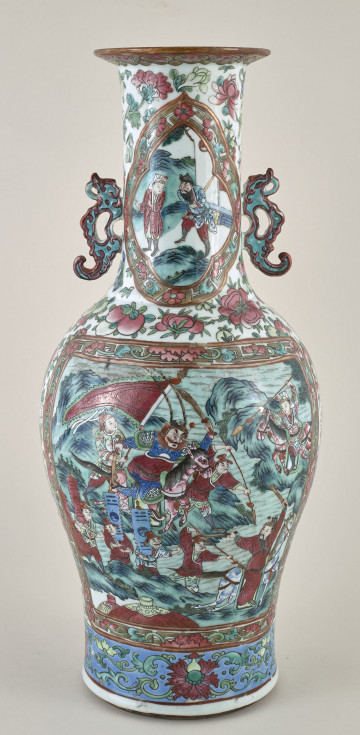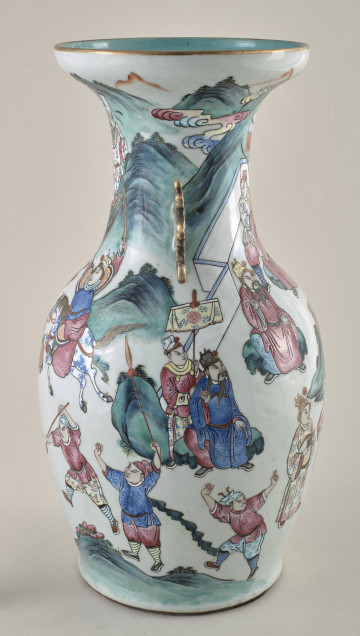
Chinese vase
19th / 20th century
Castle Museum in Łańcut
Part of the collection: Orient
Vase of thick porcelain with a round bottom, the body widening towards the top, strongly bulged, passing into a neck, with a domed lid placed on it. On the lid a gilt handle in the form of a Fo dog or Buddha lion motif. Brocade type decoration in red, green, cobalt (blue) and black. Peony flowers and Fo dog on a gold background, two cranes and a pair of pheasants placed in fancifully cut fields. Hoo bird and floral motifs on the shoulders of the vases. It was created for export to Europe and decorated in the Imari style. This named refers to the port in Japan where the porcelain was manufactured – located about 6 kilometres south of Arita, in the province of Hizen, on the island of Kyushu. Products were transported from that port to Europe. The history of Japanese porcelain dates back to the early 17th century. Dishes were made from local materials – kaolin clay – from the 17th century onwards, initially inspired by the Chinese ceramics. In time, the multicoloured glazed decoration combined with blue under-glaze became a characteristic feature of the style. These patterns were called imari. Imported by Dutch merchants, they were very popular in Europe at the end of the 17th century and became a permanent piece of furnishing in fashionable Rococo and Classicist parlours. In the 1930s the production of imitated imari began in Meissen, Delft and other manufactures. Japan, Arita. 18th/19th century.
Author / creator
Dimensions
height: 44 cm
Object type
Orient
Technique
painting, ceramic
Material
paint, porcelain
Creation time / dating
Creation / finding place
Owner
Castle Museum in Łańcut
Identification number
Location / status

19th / 20th century
Castle Museum in Łańcut

19th / 20th century
Castle Museum in Łańcut

19th / 20th century
Castle Museum in Łańcut
DISCOVER this TOPIC
Museum of King Jan III's Palace at Wilanów
DISCOVER this PATH
Educational path